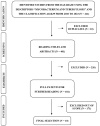Trends in Viral Vector-Based Vaccines for Tuberculosis: A Patent Review (2010-2023)
- PMID: 39204002
- PMCID: PMC11359462
- DOI: 10.3390/vaccines12080876
Trends in Viral Vector-Based Vaccines for Tuberculosis: A Patent Review (2010-2023)
Abstract
Tuberculosis (TB) is an ancient global public health problem. Several strategies have been applied to develop new and more effective vaccines against TB, from attenuated or inactivated mycobacteria to recombinant subunit or genetic vaccines, including viral vectors. This review aimed to evaluate patents filed between 2010 and 2023 for TB vaccine candidates. It focuses on viral vector-based strategies. A search was carried out in Espacenet, using the descriptors "mycobacterium and tuberculosis" and the classification A61K39. Of the 411 patents preliminarily identified, the majority were related to subunit vaccines, with 10 patents based on viral vector platforms selected in this study. Most of the identified patents belong to the United States or China, with a concentration of patent filings between 2013 and 2023. Adenoviruses were the most explored viral vectors, and the most common immunodominant Mycobacterium tuberculosis (Mtb) antigens were present in all the selected patents. The majority of patents were tested in mouse models by intranasal or subcutaneous route of immunization. In the coming years, an increased use of this platform for prophylactic and/or therapeutic approaches for TB and other diseases is expected. Along with this, expanding knowledge about the safety of this technology is essential to advance its use.
Keywords: patents; subunit; tuberculosis; vaccine; viral vector.
Conflict of interest statement
The authors declare no conflicts of interest.
Figures


References
-
- Global Tuberculosis Report 2023. World Health Organization; Geneva, Switzerland: 2023.
Publication types
Grants and funding
LinkOut - more resources
Full Text Sources

